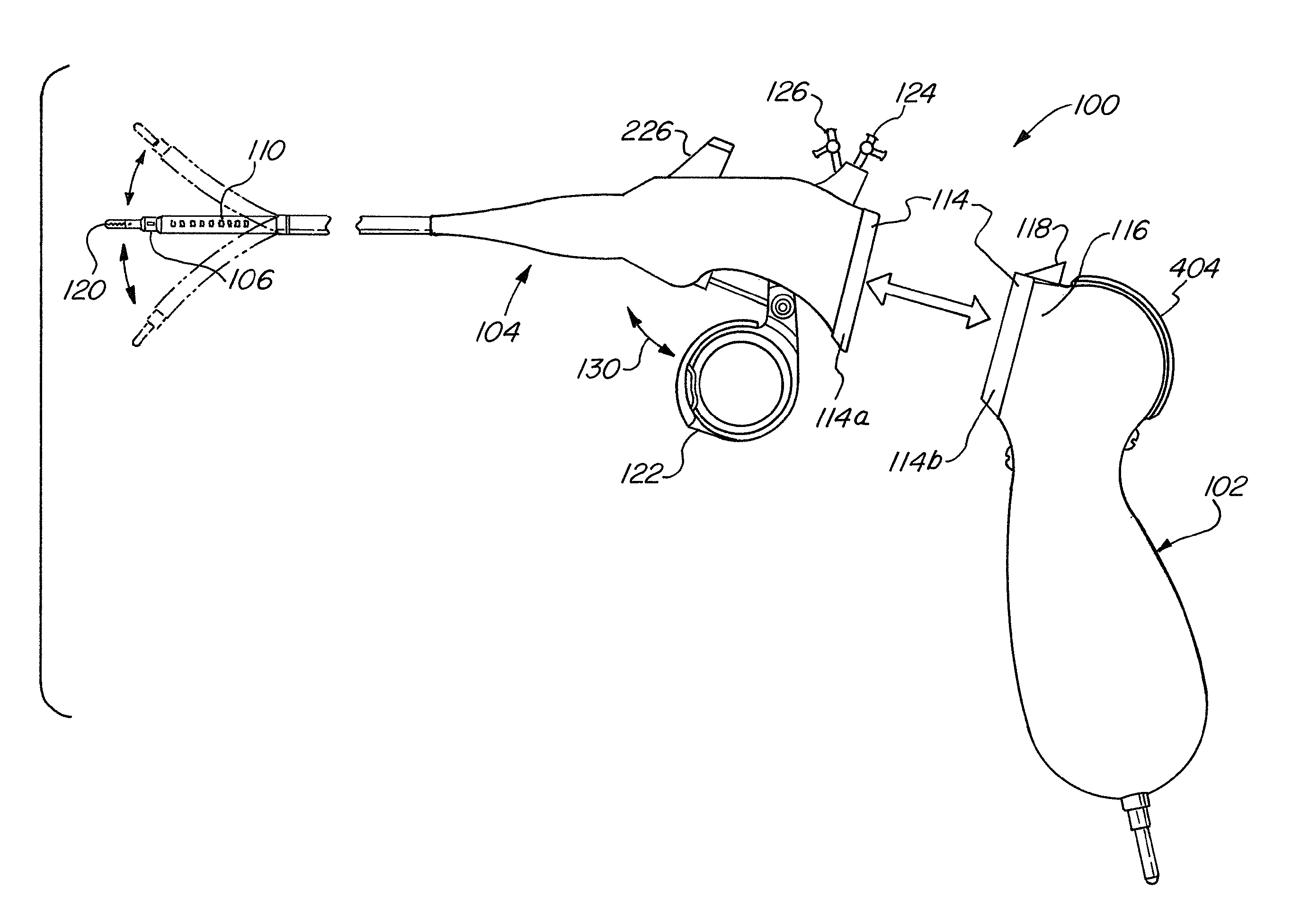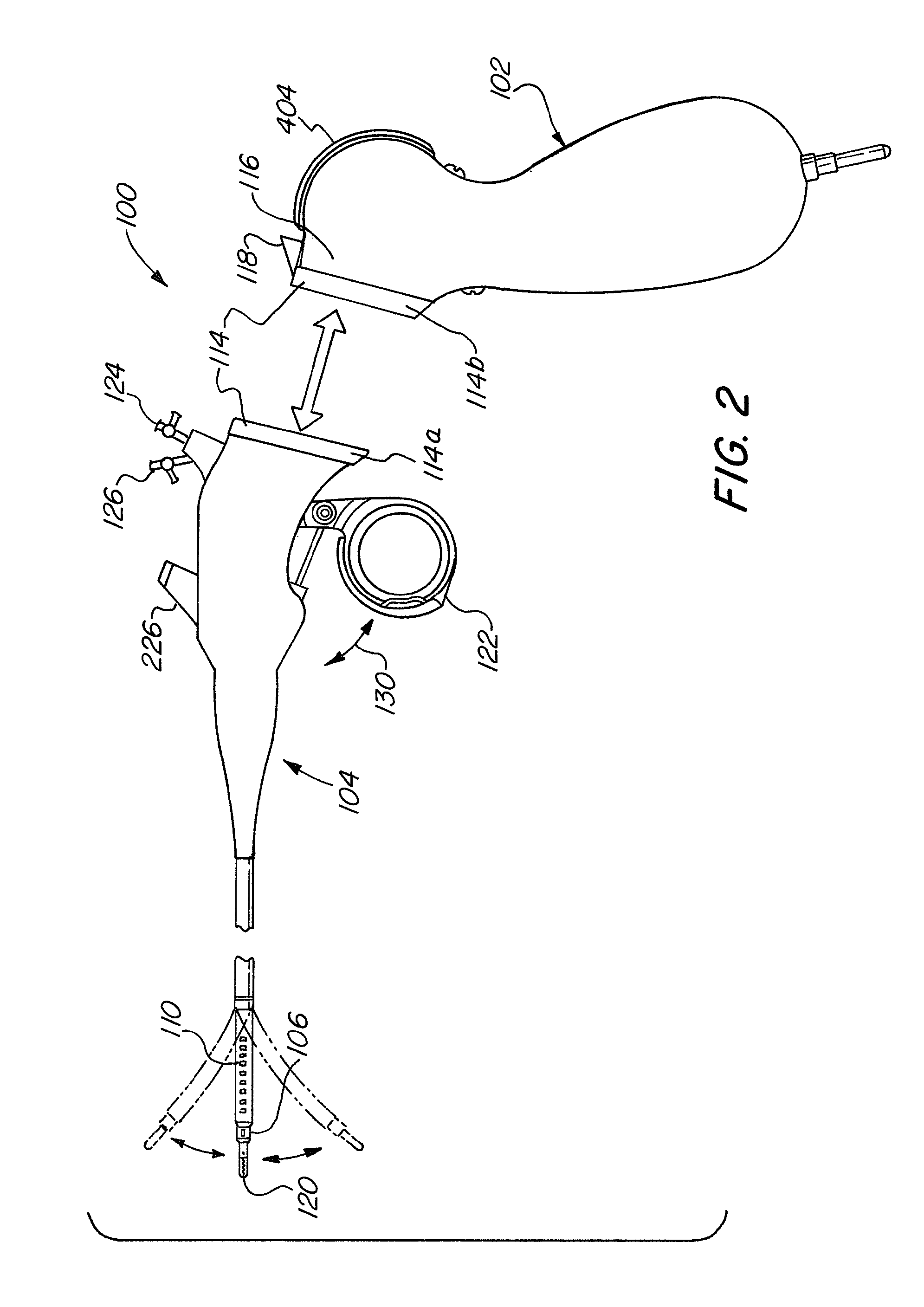Detachable shaft flexible endoscope
a flexible endoscope and flexible technology, applied in the field of endoscopes, can solve the problems of increasing the complexity of the endoscope, increasing the risk of damage, and affecting the operation of the endoscope, so as to achieve the effect of convenient attachmen
- Summary
- Abstract
- Description
- Claims
- Application Information
AI Technical Summary
Benefits of technology
Problems solved by technology
Method used
Image
Examples
Embodiment Construction
[0037]The following detailed description illustrates the invention by way of example, not by way of limitation of the principles of the invention. This description will enable one skilled in the art to make and use the invention, and describes several embodiments, adaptations, variations, alternatives and uses of the invention, including what is presently believed to be the best mode of carrying out the invention.
[0038]Referring to the figures in detail and first to FIGS. 1-2, there is shown a flexible endoscope 100 according to an exemplary embodiment of the present invention. The flexible endoscope 100 includes a handle 102 and a flexible shaft 104. The flexible shaft 104 has a distal end 106 and a proximal end 108, wherein the flexible shaft 104 is adapted to be inserted into a cavity of a living body (“operative site”). A distal portion (or bending portion) 110 disposed proximally from the distal end 106 can be articulated and deflected in any direction within a plane relative t...
PUM
 Login to View More
Login to View More Abstract
Description
Claims
Application Information
 Login to View More
Login to View More - R&D
- Intellectual Property
- Life Sciences
- Materials
- Tech Scout
- Unparalleled Data Quality
- Higher Quality Content
- 60% Fewer Hallucinations
Browse by: Latest US Patents, China's latest patents, Technical Efficacy Thesaurus, Application Domain, Technology Topic, Popular Technical Reports.
© 2025 PatSnap. All rights reserved.Legal|Privacy policy|Modern Slavery Act Transparency Statement|Sitemap|About US| Contact US: help@patsnap.com



